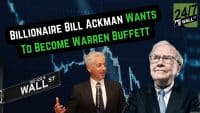
The energy sector has performed well this year so far, and the upside is expected to continue amid geopolitical tensions and rising demand. So, if you are still planning to invest in energy stocks, then one good way to invest is through energy ETFs, which give investors exposure to the energy sector.
Investing through ETFs also allows investors to diversify their risk, as well as reduce their overall cost. Let’s take a look at the 10 best performing Equity Energy ETFs in 2022.
10 Best Performing Equity Energy ETFs In 2022
We have used the past one-year return data (from money.usnews.com) to rank the 10 best performing Equity Energy ETFs in 2022.
-
First Trust Energy AlphaDEX ETF (FXN, 38%)
First Trust Energy AlphaDEX Fund (NYSEARCA:FXN) aims to track the investment performance of the StrataQuant® Energy Index, which is a modified equal-dollar weighted index that objectively identifies and selects stocks from the Russell 1000® Index.
It is up by almost 34% year to date and has more than $1.60 billion in net assets. FXN has an expense ratio of 0.64%. FXN’s top four holdings are: Cheniere Energy, Devon Energy, Occidental Petroleum and Continental Resources.
-
First Trust Natural Gas ETF (FCG, 39%)
First Trust Natural Gas ETF (NYSEARCA:FCG) aims to track the investment performance of the ISE-Revere Natural Gas Index, which includes the mid and large capitalization companies that get a majority of their revenue from midstream activities and/or the exploration and production of natural gas.
It is up by almost 36% year to date and has more than $800 million in net assets. FCG has an expense ratio of 0.60%. FCG’s top four holdings are: DCP Midstream LP, Hess Midstream LP, Western Midstream Partners LP and Conocophillips.
-
Invesco S&P 500® Equal Weight Energy ETF (RYE, 39%)
Invesco S&P 500 Equal Weight Energy ETF (NYSEARCA:RYE) aims to track the investment performance of the S&P 500® Equal Weight Energy Index, which includes the components of the S&P 500® Energy Index.
It is up by almost 32% year to date and has more than $440 million in net assets. RYE has an expense ratio of 0.40%. RYE’s top four holdings are: Marathon Petroleum, Occidental Petroleum, Valero Energy and Conoco Phillips.
-
JHancock Multifactor Energy ETF (JHME, 41%)
John Hancock Multifactor Energy ETF (NYSEARCA:JHME) aims to track the investment performance of the John Hancock Dimensional Energy Index, which includes the securities in the U.S. energy sector.
It is up by over 34% year to date and has more than $25 million in net assets. JHME has an expense ratio of 0.40%. JHME’s top four holdings are: Conoco Phillips, Exxon Mobil, Chevron, and Marathon Petroleum.
-
Vanguard Energy ETF (VDE, 42%)
Vanguard Energy Index Fund ETF (NYSEARCA:VDE) aims to track the investment performance of the MSCI US Investable Market Index (IMI)/Energy 25/50, which includes large, mid-size, and small U.S. companies within the energy sector.
It is up by almost 36% year to date and has more than $7 billion in net assets. VDE has an expense ratio of 0.10%. VDE’s top four holdings are: Exxon Mobil, Chevron, Conoco Phillips and EOG Resources.
-
Fidelity® MSCI Energy ETF (FENY, 43%)
Fidelity MSCI Energy Index ETF (NYSEARCA:FENY) aims to track the investment performance of the MSCI USA IMI Energy 25/50 Index, which represents the performance of the energy sector in the U.S. equity market.
It is up by almost 36% year to date and has more than $1.30 billion in net assets. FENY has an expense ratio of 0.8%. FENY’s top four holdings are: Exxon Mobil, Chevron, Conoco Phillips and EOG Resources.
-
Energy Select Sector SPDR® ETF (XLE, 43%)
Energy Select Sector SPDR Fund (NYSEARCA:XLE) aims to track the investment performance of the Energy Select Sector Index, which includes companies identified as Energy companies by the GICS. XLE uses a replication strategy to achieve its investment objective.
It is up by almost 35% year to date and has more than $34 billion in net assets. XLE’s top four holdings are: Exxon Mobil, Chevron, Conoco Phillips and EOG Resources.
-
iShares US Energy ETF (IYE, 43%)
iShares US Energy ETF (NYSEARCA:IYE) aims to track the investment performance of the Russell 1000 Energy RIC 22.5/45 Capped Index, which includes U.S. equities in the energy sector.
It is up by over 35% year to date and has more than $1.90 billion in net assets. IYE’s top four holdings are: Exxon Mobil, Chevron, Conoco Phillips and EOG Resources.
-
iShares US Oil & Gas Explor & Prod ETF (IEO, 48%)
iShares US Oil & Gas Exploration & Production ETF (BATS:IEO) aims to track the investment performance of the Dow Jones U.S. Select Oil Exploration & Production Index, which includes U.S. equities dealing in oil and gas exploration and production.
It is up by over 40% year to date and has more than $800 million in net assets. IEO’s top four holdings are: Conoco Phillips, EOG Resources, Pioneer Natural Resources and Marathon Petroleum.
-
Invesco Dynamic Engy Explr & Prdtn ETF (PXE, 49%)
Invesco Dynamic Energy Exploration & Prod ETF (NYSEARCA:PXE) aims to track the investment results of the Dynamic Energy Exploration & Production IntellidexSM Index, which includes U.S. companies dealing in the exploration and production of natural resources used to produce energy.
It is up by almost 46% year to date and has more than $250 million in net assets. PXE’s top four holdings are: Conoco Phillips, Marathon Petroleum, Continental Resources and Diamondback Energy.
This article originally appeared on ValueWalk
Take Charge of Your Retirement In Just A Few Minutes (Sponsor)
Retirement planning doesn’t have to feel overwhelming. The key is finding expert guidance—and SmartAsset’s simple quiz makes it easier than ever for you to connect with a vetted financial advisor.
Here’s how it works:
- Answer a Few Simple Questions. Tell us a bit about your goals and preferences—it only takes a few minutes!
- Get Matched with Vetted Advisors Our smart tool matches you with up to three pre-screened, vetted advisors who serve your area and are held to a fiduciary standard to act in your best interests. Click here to begin
- Choose Your Fit Review their profiles, schedule an introductory call (or meet in person), and select the advisor who feel is right for you.
Why wait? Start building the retirement you’ve always dreamed of. Click here to get started today!
Thank you for reading! Have some feedback for us?
Contact the 24/7 Wall St. editorial team.





